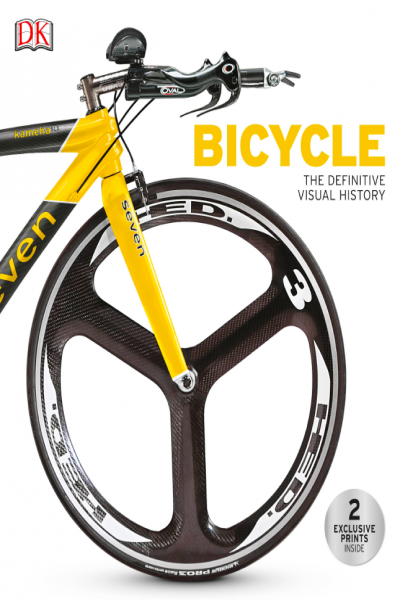Bicycle The Definitive Visual History
Bicyle the definitive visual history
- 130,000đ
- Thương hiệu: DK Publishing
- Mã sản phẩm: BIC110000
- Tình trạng: 2
Nowadays, children can learn to ride a bicycle in no time thanks to a new invention—the “balance bike.” They no longer need to resort to the unnatural equilibrium of stabilizers to avoid overbalancing. Now anyone can discover the carefree joys of balancing on two wheels immediately. But how many people realize that the balance bike is actually 200 years old? First built for adults in 1817, and called a draisine, after its inventor, or Laufmaschine (running machine), it was seen as a possible alternative to traveling by horse following the eruption of Mount Tambora, Indonesia, which led to the socalled “year without a summer”, and a shortage of animal feed. The inventor was aware that people were reluctant to take both feet off firm ground, which restricted possibilities for propulsion. The biggest factor limiting the popularity of this new man–machine– road system was potential rider anxiety. It took 50 years for people to feel safe enough to put both feet on pedals, in 1864, eased by the roller-skating boom started on American rinks. Once mastered, the bicycle became the freedom machine for the young at heart. Turn-of-the-20th-century memoirs are full of happy reminiscences of increased opportunities for travel and encounters with the opposite sex. Young couples quickly learned to evade their chaperones by taking to the bicycle. And, once married, they could use a tandem for their honeymoon. Meanwhile, in the early 20th century, French cycle touring clubs invented a system of “diagonales”—routes crisscrossing the whole of France—which they even rode at night. Pioneering round-the-world cyclists increased the distances traveled, often passing through dangerous and remote areas. Indeed, the first circumnavigation of the globe as far as possible on dry land was achieved on a bike. Today, transcontinental cycling has become a form of mass tourism, undertaken by increasing numbers of riders. Records for the fastest journey following specific routes are broken repeatedly. On a more practical level, as bicycles became more affordable from the late 1890s onward, factory and office workers used them to reach better housing in the suburbs. The bike also became a means to deliver goods, mail, and telegrams faster. In cities and suburbs, doctors, midwives, and clergy used bikes as a quicker and more convenient way to reach the people they served. Moreover, firefighters, paramedics, the police, and the military all took advantage of the speedy bicycle. All the specialpurpose motor vehicles of today had bicycle forerunners; the late Victorian equivalent of the automobile was a bicycle. Gradually, these precursors are returning to today’s town and cities in updated forms: the messenger bike, the police bike, and the pedicab. In the cycling boom of the 1890s, particularly in the US, bicycle sales provided rich pickings for businessmen involved in the manufacture and sale of bicycles and accessories. This was disastrous for competing transportation service sectors. Businesses concerned with the supply and care of horses, such as livery stables and feed providers, were also hit hard. In 1896, such businesses lost an estimated $112 million in New York alone. In rich households, the demand for grooms and other horse-care staff was much reduced, too.






